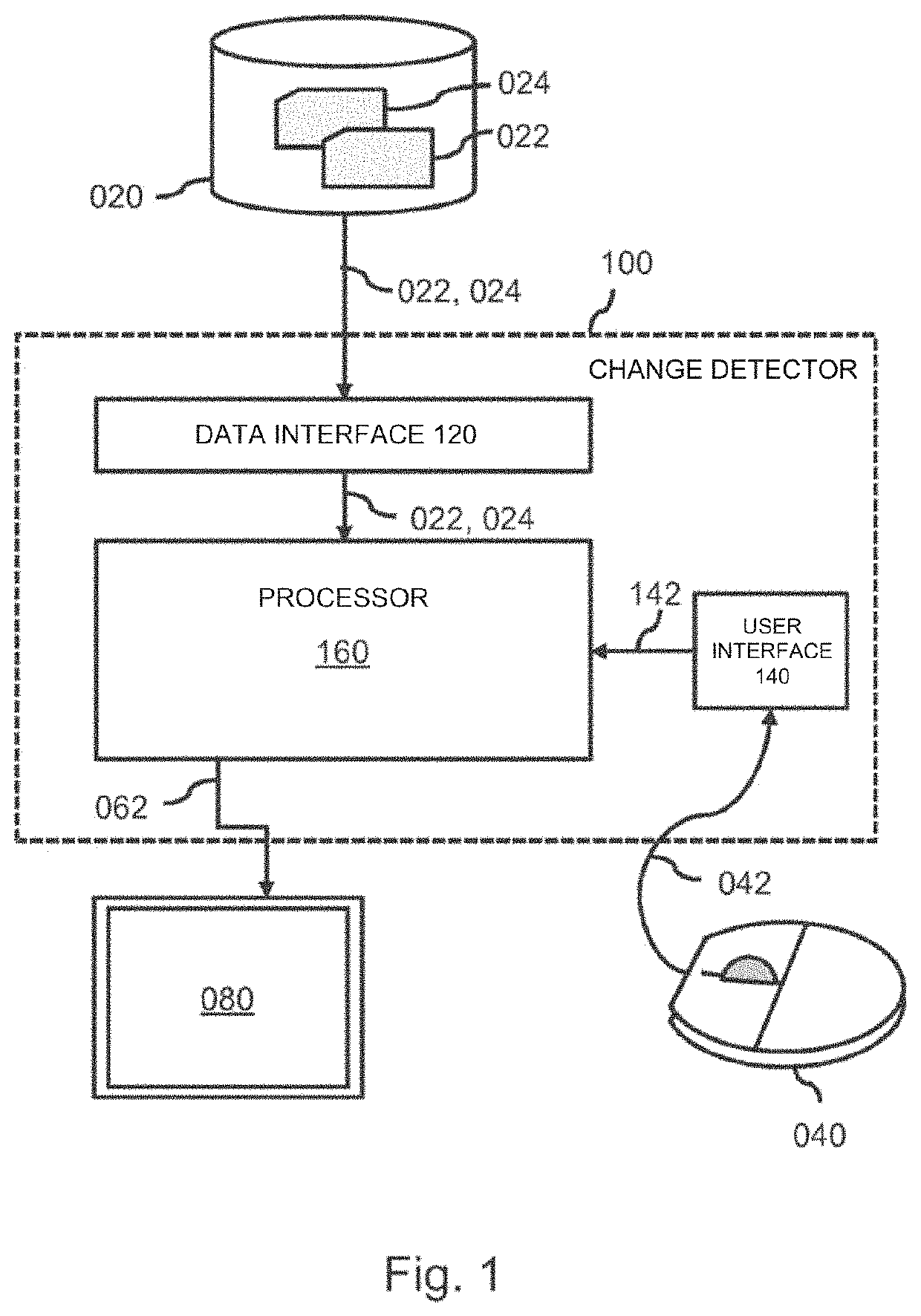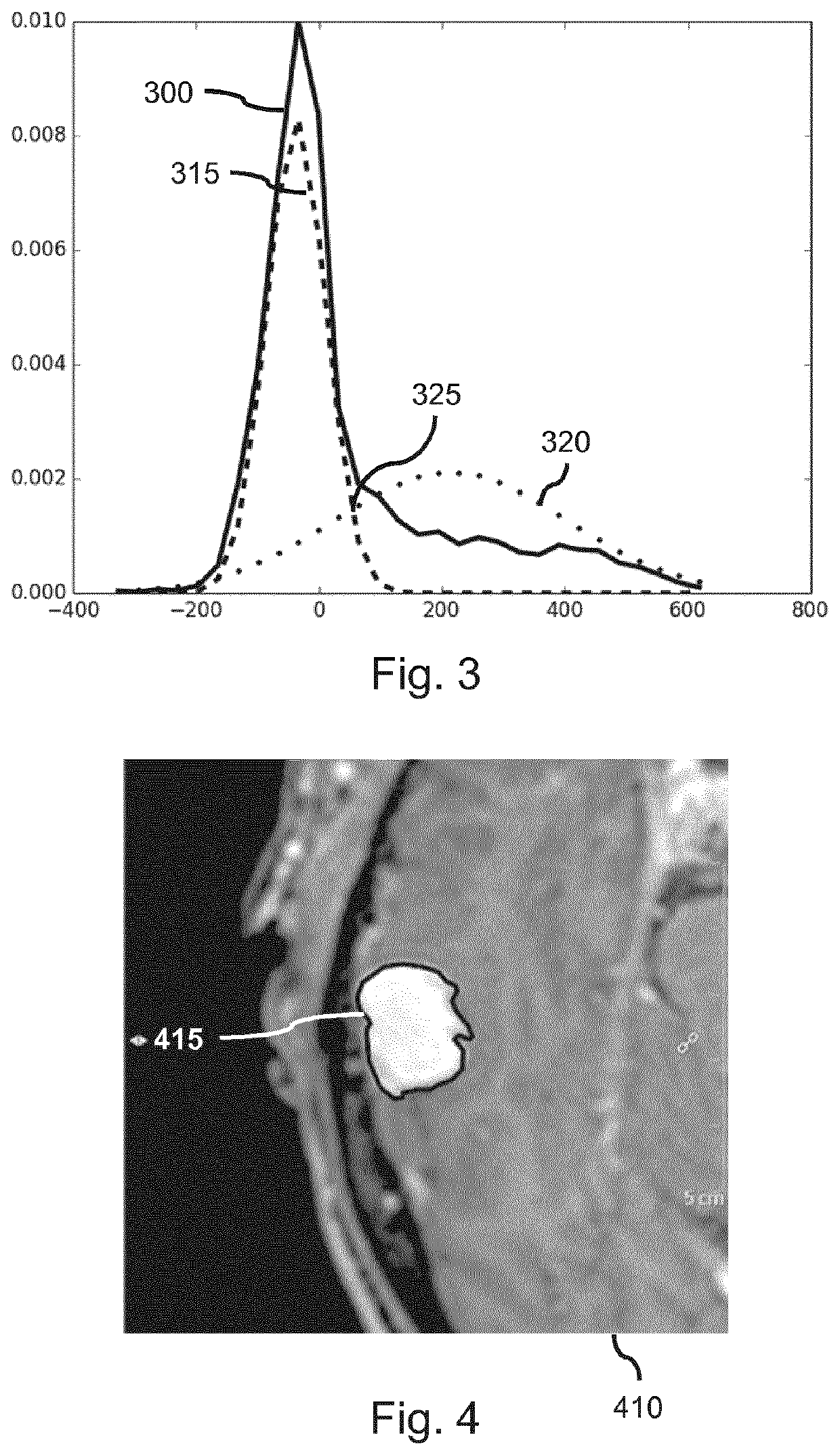Change detection in medical images
a technology for change detection and medical images, applied in image enhancement, image analysis, healthcare informatics, etc., can solve the problems of insufficient accuracy of known automated change detection approaches, and achieve the effects of facilitating visualization and evaluation, facilitating review and evaluation of detected changes, and improving interpretation of changes
- Summary
- Abstract
- Description
- Claims
- Application Information
AI Technical Summary
Benefits of technology
Problems solved by technology
Method used
Image
Examples
Embodiment Construction
[0088]FIG. 1 shows a system 100 which is configured for change detection in medical images. The system 100 comprises an image data interface 120 configured to access a first medical image and a second medical image. In the example of FIG. 1, the image data interface 120 is shown to be connected to an external image repository 020 which comprises the image data of the first medical image 022 and the second medical image 024. For example, the image repository 020 may be constituted by, or be part of, a Picture Archiving and Communication System (PACS) of a Hospital Information System (HIS) to which the system 100 may be connected or comprised in. Accordingly, the system 100 may obtain access to the image data of the first medical image 022 and the second medical image 024 via the HIS. Alternatively, the image data of the first medical image and the second medical image may be accessed from an internal data storage of the system 100. In general, the image data interface 120 may take va...
PUM
 Login to View More
Login to View More Abstract
Description
Claims
Application Information
 Login to View More
Login to View More - R&D
- Intellectual Property
- Life Sciences
- Materials
- Tech Scout
- Unparalleled Data Quality
- Higher Quality Content
- 60% Fewer Hallucinations
Browse by: Latest US Patents, China's latest patents, Technical Efficacy Thesaurus, Application Domain, Technology Topic, Popular Technical Reports.
© 2025 PatSnap. All rights reserved.Legal|Privacy policy|Modern Slavery Act Transparency Statement|Sitemap|About US| Contact US: help@patsnap.com



